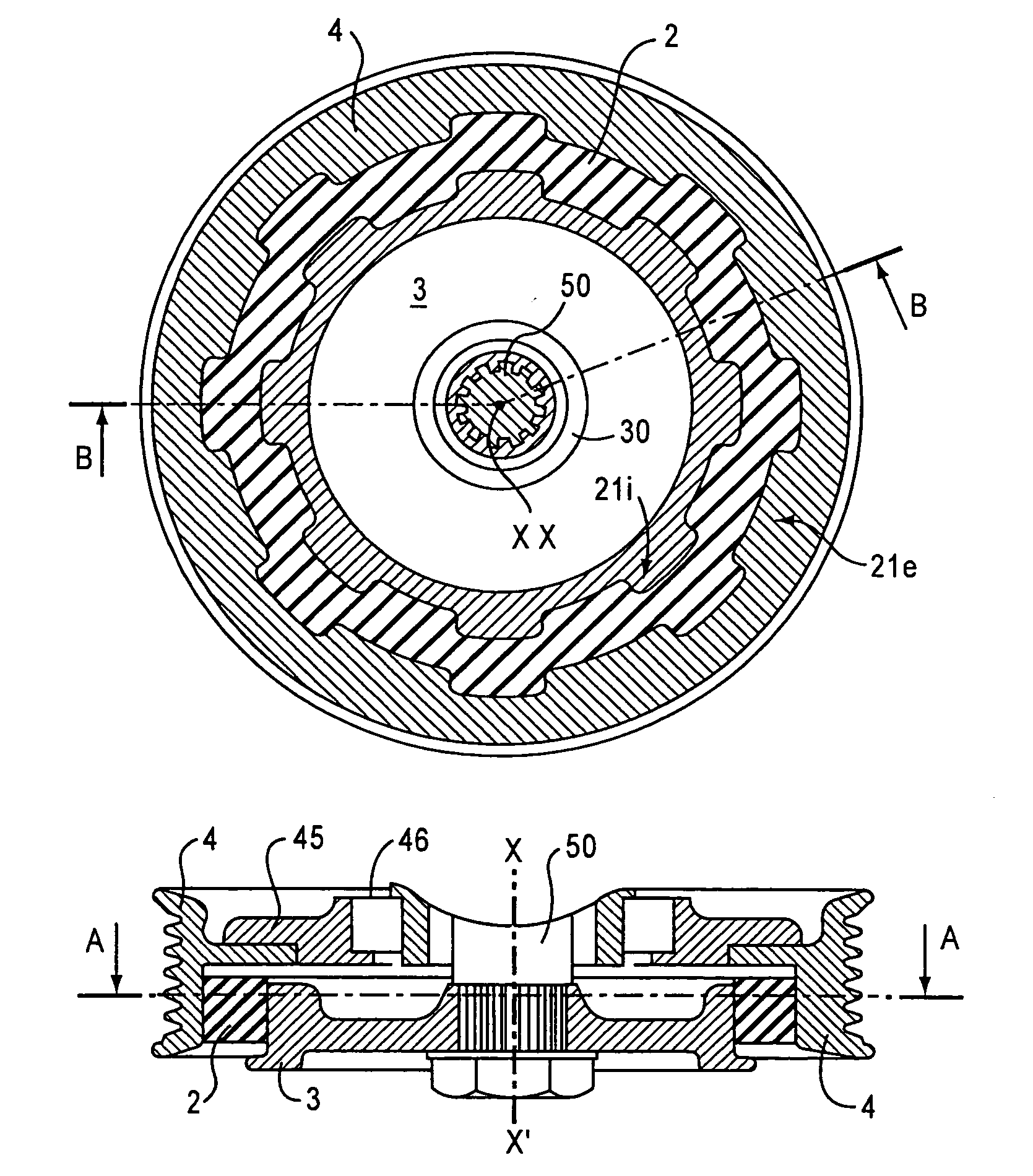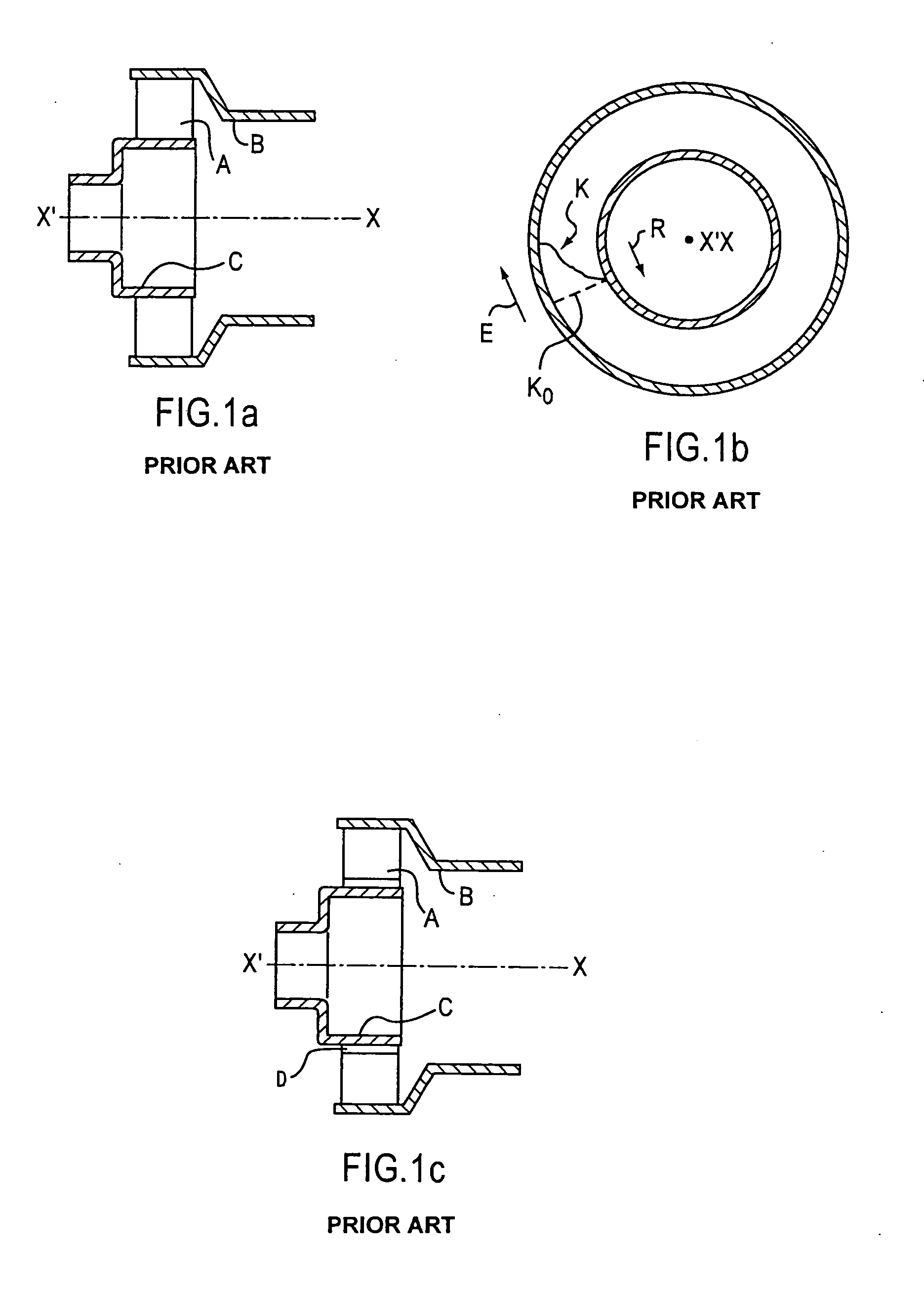Decoupling element of deformable material in a power transmission system
a technology of deformation material and power transmission system, which is applied in the direction of winding motors, slip couplings, yielding couplings, etc., can solve the problems of unsatisfactory coating and molding operations in terms of cost and harm to the environment, -negligible extra costs, extra costs, etc., and achieves the effect of convenient assembly
- Summary
- Abstract
- Description
- Claims
- Application Information
AI Technical Summary
Benefits of technology
Problems solved by technology
Method used
Image
Examples
Embodiment Construction
[0037]As shown diagrammatically in the fragmentary section of FIG. 2a, an example of a cylindrical decoupling ring 2 of the invention comprises a continuous annular central core 1 (outlined within the ring by dashed lines in the figure) and abrupt projections 2e, 2i extending radially from the side flanks 22a and projecting at right angles in this example.
[0038]The projections respectively referenced 2e and 2i are regularly distributed in alternation respectively on the outside face 21e and on the inside face 21i of the ring in particular in order to conserve good uniformity in mass distribution. A section of ring defined by a pair of successive projections, an inside projection and an outside projection, thus forms a basic pattern which is repeated around the ring so as to form cylindrical crenellated faces.
[0039]The ring meshes between two supports comprising a central hub 3 and a rim 4 presenting faces 31 and 41 that face the complementary faces 21i and 21i of the ring. The rim a...
PUM
 Login to View More
Login to View More Abstract
Description
Claims
Application Information
 Login to View More
Login to View More - R&D
- Intellectual Property
- Life Sciences
- Materials
- Tech Scout
- Unparalleled Data Quality
- Higher Quality Content
- 60% Fewer Hallucinations
Browse by: Latest US Patents, China's latest patents, Technical Efficacy Thesaurus, Application Domain, Technology Topic, Popular Technical Reports.
© 2025 PatSnap. All rights reserved.Legal|Privacy policy|Modern Slavery Act Transparency Statement|Sitemap|About US| Contact US: help@patsnap.com



